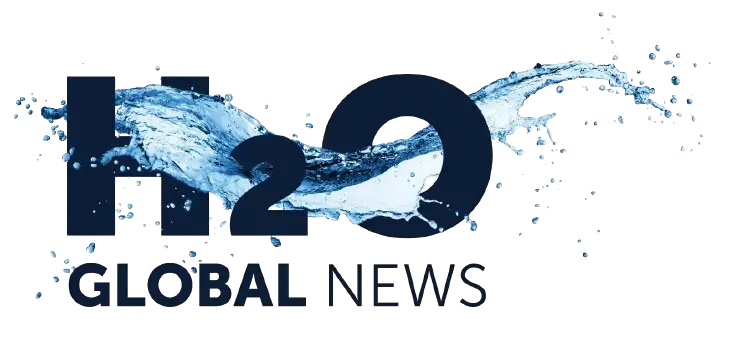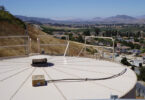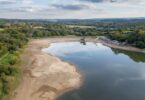It’s hard to imagine an essential piece of biodiversity quietly slipping toward collapse, but that is precisely what’s happening in many of the UK’s rivers. While they may still appear tranquil on the surface, beneath lies a story of chronic overextraction, chemical overload and plummeting oxygen levels; conditions that are causing declining ecosystem health and pushing iconic species closer to extinction.
In 2023, the Atlantic salmon was officially reclassified as “endangered” on the IUCN Red List. This is just one species, but it sums up the overall urgency of the situation.
Although traditional government oversight and reactive policies may currently be falling short, citizen science and intelligent monitoring technologies are stepping in to make a real difference to the health of UK rivers.
At the forefront of this new wave of grassroots tech is WildFish, an independent UK conservation charity that champions the protection of wild fish and their freshwater ecosystems. Their flagship initiative, SmartRivers, demonstrates how precision science can meet citizen engagement to close critical data gaps and encourage regulators into action.
I spoke to Dr Janina Gray, Head of Science and Policy at WildFish, to find out more about the state of our rivers and the work they are doing to help.
“The problems facing UK rivers are urgent, and vary from pollution and abstraction, to the risk of losing aquatic plants and wildlife to extinction. Water companies abstract 700 million litres of water unsustainably from rivers every single day. Combine that with thousands of hours of daily sewage discharge, and you’ve created a perfect storm of low water levels, toxin accumulation and habitat degradation.”
How does SmartRivers Work?
Launched in 2019, SmartRivers is more than a monitoring project, it’s a data-driven movement. By training volunteers to collect high-quality, scientifically robust information on freshwater ecosystems, WildFish is effectively creating a distributed network of water quality watchdogs. The programme focuses specifically on aquatic invertebrates, using what Dr Gray calls “invertebrate fingerprinting” as a primary diagnostic tool.
“Unlike nutrient testing, which gives you a snapshot of water quality at one point in time, invertebrates offer a more comprehensive view. They live in the river over weeks and months and integrate the impacts of pollutants over that time. Analysing their presence- or absence- tells us a lot about chronic stressors on the ecosystem.”
Volunteers are trained to collect samples using a standardised three-minute kick-sweep and one-minute hand search method. These samples are then analysed down to the species level, providing information that allows scientists to track biodiversity, identify invasive or threatened species and develop water quality scorecards based on five common stress types.
Over 6,000 hours of volunteer training have already been completed, and the results are proving helpful. The SmartRivers dataset is fully open-access, allowing NGOs, policy advocates and even regulators to use the data for scientific scrutiny and public accountability.
Citizen Science as a Regulatory Force
A perfect indicator of SmartRivers’ impact lies in how its data has been used to influence regulatory decisions.
One success story was from the River Alyn, part of the Dee catchment in North Wales. After SmartRivers volunteers consistently recorded chemical pressure in the area, WildFish used that data to request pesticide usage records from the Health and Safety Executive (HSE). Although initially denied access, the Information Commissioner later ruled that these records are indeed held “on behalf of” the HSE. A legal challenge is ongoing, but its implications are already resonating nationally.
“This legal battle could set a precedent for transparency in pesticide regulation. And it wouldn’t have been possible without the credibility of the data our volunteers collected.”
Another success story comes from Newcastle’s River Ouseburn. During their first monitoring season in spring 2024, Tyne Rivers Trust volunteers discovered the presence of Dikerogammarus haemobaphes– better known as the invasive demon shrimp. The find was swiftly reported to local regulators, prompting an investigation. Such early detections are vital for preventing ecological disruptions and costly mitigation later.
The Next Frontier: eDNA and AI Integration
While the SmartRivers programme already stands out for its methodological rigour, WildFish is actively looking to expand its technological toolkit. One area of promise lies in environmental DNA (eDNA). This is a method that identifies species by detecting trace genetic material in water samples.
“eDNA can spot rare or elusive species that traditional surveys might miss. It’s particularly valuable for early detection of invasive species or monitoring endangered ones like the Atlantic salmon.”
Paired with evolving AI capabilities, eDNA and other digital diagnostics could revolutionise how we track river health. AI, in particular, has the potential to analyse monitoring data in real-time, providing instant alerts for pollution incidents or anomalies in ecosystem behaviour. For citizen science projects like SmartRivers, AI could also help volunteers better understand and interpret their findings, streamlining analysis without compromising accuracy.
These technologies have the potential to be incredibly helpful, but it should also be remembered that they must be implemented with care.
“As with all things in the ‘AI revolution’ this technology requires thorough input and scrutinization by experts from the beginning to ensure that mistakes and erroneous assumptions are not unintentionally perpetuated into future monitoring methodologies.”
Collaboration, Not Competition
What sets WildFish’s approach apart is its emphasis on collaboration. By making data publicly accessible and offering training to partner organisations, the charity fosters a culture of shared responsibility and collective impact. It’s a powerful counter to the fragmented nature of water governance in the UK, where oversight is often split between agencies with, often, insufficient mandates.
“Citizen science doesn’t just fill data gaps. It democratises environmental stewardship. When people are empowered to understand and monitor their local river, they become advocates for its protection.”
WildFish’s mission is simple yet profound: healthier wild fish stocks, restored biodiversity and cleaner, more resilient freshwater habitats across the UK.
Whether it’s pushing for policy change, exposing corporate malpractice or training the next generation of river stewards, WildFish proves that precision technology and grassroots action can work hand in hand.
In an era where rivers are declining rapidly and pollution is outpacing regulation, it’s tempting to believe the situation is too complex to solve. But the work of WildFish reminds us that solutions already exist. They just require good science and a community willing to wade in and do the work.







